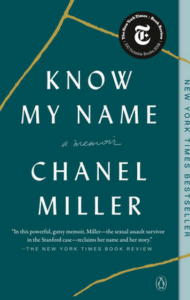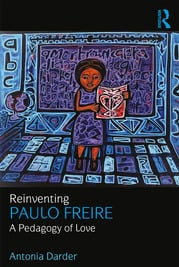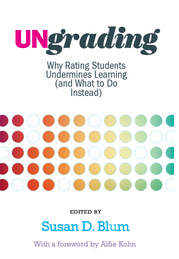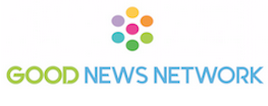by Kristy Kelly, Director of Writing, School of Writing, Literature, & Film
Just the other day in my Writing 222 class on Argumentation, I asked students to freewrite on the question “What is the connection between grades and learning?” We use labor-based grading in my WR 222 classes, so I initiate conversations with my students early on about what grades do to their learning: where do grades focus their motivation? What emotions do they elicit? What beliefs do they prompt about their capacity to face new learning situations?
The class, like most others to whom I’ve posed this question, had a wide-ranging set of responses. Some reported that grades motivate them to work harder or give them a clearer sense of where they stand in a subject. Others discussed the “academic validation” that grades can provide when they get a high grade, and on the flip side, the sense of deflation and self-doubt that arises when they get a grade lower than expected. Still more referenced the experience of stress, pressure, and anxiety that grades induce, so that taking classes becomes more about protecting a GPA than about deeply engaging with course content. Overall, it was clear just how large grades loom over students’ perception of their own capability as learners, and how grades function as an extrinsic motivation that stimulate anxiety as much or more than engagement.
While the transition into labor-based grading was a little bumpy due partially to the pandemic, it did open up space for students to think more about improving their writing and less about the grade stamped on the work they were able to produce, particularly in the chaotic learning conditions of Covid. Like many composition scholars and teachers nationwide, I started experimenting with labor-based grading to amplify the most rewarding elements of writing classes—exploring difficult questions through research, collaboration in peer review, a deep commitment to revision and reflection—while dialing down the pressures attached to assigning and receiving grades.
The Limits and Benefits of Labor-Based Grading
There are many ways to deploy labor based grading, but the basic concept remains the same: students are guaranteed a particular grade (in the case of my classes, a B) for completing a particular amount of labor according to a shared set of specifications. Students complete more labor—additional assignment components, subsequent rounds peer review, further reflection, and so on—to earn a higher grade.
As Asao Inoue has theorized, this model isn’t simply about reducing stress about grades. It’s also intended to correct inequities steeped into the culture of higher education, which values the performance of academic standards designed to uphold whiteness and white supremacy. From this perspective, evaluating students’ work based on its alignment with “Standard Written English” is itself an act of racism. Attaching evaluation to students’ labor, rather than their performance of a prestige dialect that may not reflect their cultural or educational background, is one small step toward creating a more equitable learning environment.
Any evaluative model, no matter how equity-focused, prompts the question: “equitable for whom?” Our classes still demand letter grades to measure students’ performance, and other scholars of composition have expressed concern that labor-based grading simply trades one inequitable model for another. Perhaps most notably, Ellen Carillo has argued that evaluating students based on labor still privileges some learners over others, and can place multiply-marginalized students, disabled students, or any students who need more time to complete assignments at a distinct disadvantage.
Student Responses to a New Take on Grades
My own students have expressed a similar mix of enthusiasm coupled with healthy skepticism. Skeptics have shared their discomfort with the shift from rewarding the process over the product: some feel that labor-based grading required too much work relative to the amount of labor they’d have put in to get an A on a traditional model. (Those kinds of complaints only convinced me further of the promise of labor-based grading to break out of arbitrary and inequitable standards). Others felt that the model disadvantaged students with less time to devote to the class, or that the additional assignment components felt like “extra” labor, mirror Ellen Carillo’s concerns about accessibility.
But for those who resonated with the model, the consensus was clear: labor based grading gave them more space to test new ideas, reduced the stress of trying to predict what grade they would get, and increased their investment in meeting their writing goals. Students reported getting more enjoyment out of the writing process, feeling the freedom to embrace creativity, and feeling a deeper, intrinsic incentive to improve their writing and analytical thinking skills.
Considering the Switch to Labor Based Grading
As a teacher, you might be wondering: “how can I ensure that my students are actually meeting a shared set of standards if they’re guaranteed a certain grade for submitting an assignment? Couldn’t they turn in anything and still get a B?” I wondered that myself when I first started using this model, and to ensure that students do meet core learning outcomes and benchmarks, we’ve started using a “C- Threshold” that the essay must crest in order to get a B (following the assignment prompt to its specifications, including appropriate citations, responding meaningfully to the assignment topic, and so on).
The need for such a threshold reveals one of the imperfections of labor-based grading: while this model can loosen the pressure to adhere to an arbitrary set of standards, it still results in a grade. And in an educational system where students must retain vigilance about their GPA, course points remain a core incentive for their performance in the class.
But by conceiving of grading as a contract, you and your students can create a shared set of standards that you want to uphold. Some of the strongest writing I’ve seen in my classes has come from collaborating with my students to determine what ingredients lead to an A, B, C, and beyond. While labor-based grading certainly doesn’t cure all inequities, it can increase students’ ownership over their process, create transparency around standards, and give them just a little more space to take creative leaps of faith.
I’ll leave you with a few tips and mindset shifts if you’re considering labor-based grading in your own course:
Tips and Mindset Shifts for Teachers
- Commenting on student writing becomes less about grade justification and more about student improvement.
- You can use additional labor components to emphasize the parts of the writing process you and your students find most valuable: rather than tacking on more assignments, it can be about inviting students to engage more deeply with the writing process, or letting students choose their own path through a project.
- There is a logistical learning curve: what happens when a student completes a portion of an additional labor-based option, for example? Setting up a concrete system and asking students for feedback can help with consistency.
- It can be hard to let go of what grade you think an assignment “should” get—and that’s part of the point.
Tips and Mindset Shifts for Students
- Labor-based grading places more of the onus on the student to decide what aspects of a project they want to opt into or out of. They may need more lead time or direct guidance as they make those decisions.
- Many students are acclimated to the traditional grading system and can feel uncomfortable engaging with grades in a different way. Talking with them about their relationship with grades is a good way to address that!
- Students often view the additional labor components as “extra credit” or may not have an innate sense of how project components fit together. They may need extra clarity about what exactly is required and what the expectations are to earn the additional points.
- While more flexibility can lead to greater growth, it sometimes leads to anxiety at first! Take time early in the term to help students set their own goals, and use plenty of reflection so they can track their progress.
Here’s a list of resources to consult if you’re considering the move to labor-based grading













